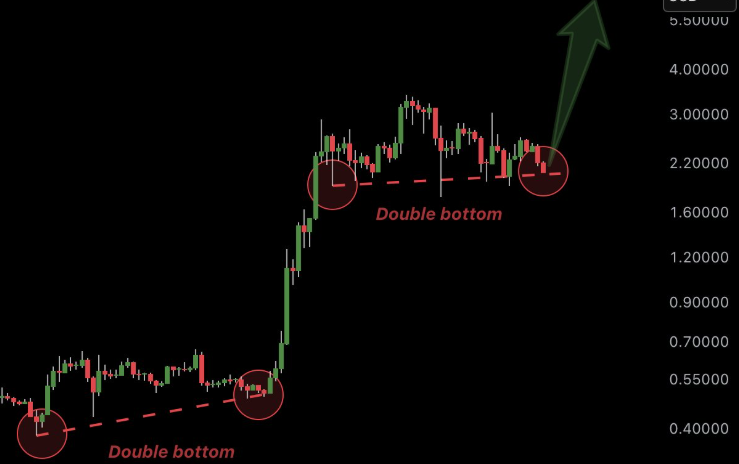XRP Price USD Analysis: Understanding Market Sentiment and News Impact

XRP, a cryptocurrency known for its fast transaction speeds and low fees, has been a prominent player in the digital asset world. For investors, traders, and enthusiasts, understanding the factors that influence XRP’s price is crucial to making informed decisions. In this article, we will dive deep into the XRP price USD analysis, exploring how market sentiment and news events impact its value. We’ll also look at how the XRP price USDT (Tether) pair plays a role in the broader market dynamics.
What is XRP? A Quick Overview
XRP is the native cryptocurrency of the Ripple network, designed to facilitate fast, low-cost cross-border transactions. It is unique because Ripple Labs, the company behind XRP, works directly with financial institutions to offer a solution to improve global payments. Unlike Bitcoin and Ethereum, which are typically mined, XRP is pre-mined, meaning there is a fixed supply of 100 billion XRP tokens.
While XRP’s primary use case is in the financial industry, its value is also influenced by broader market factors, similar to other cryptocurrencies. This article will examine how these factors impact XRP’s price, particularly in USD and USDT terms.
Factors That Impact XRP Price USD
The price of XRP, like other cryptocurrencies, is volatile and influenced by a combination of market sentiment, news events, regulatory developments, and technological advancements. Let’s break down these factors in more detail.
1. Market Sentiment and Investor Psychology
Market sentiment plays a major role in determining XRP’s price. Cryptocurrencies, in general, are known for their volatility, and XRP is no exception. Positive sentiment, driven by favorable news or optimistic market trends, can lead to significant price increases. Conversely, negative sentiment, such as fears of regulation or competition, can cause a decline in price.
Market sentiment can be observed through social media trends, news articles, and online discussions. Tools like sentiment analysis platforms or Twitter sentiment indicators are often used to gauge the mood of the market. When positive news breaks, such as Ripple securing a partnership with a major financial institution, it can trigger a surge in buying activity, pushing the XRP price upward.
2. News and Announcements Impacting XRP
The impact of news on XRP’s price cannot be overstated. Announcements about regulatory decisions, new partnerships, or developments within the Ripple network can cause price fluctuations. For example, a positive court ruling in Ripple’s ongoing legal battle with the U.S. Securities and Exchange Commission (SEC) could lead to a sharp price increase due to renewed investor confidence.
On the other hand, negative news, such as regulatory crackdowns in major markets or news of competition from other blockchain projects, can send XRP’s price downward. For example, if another cryptocurrency project becomes widely adopted by banks, XRP may face a decline in value as investors fear Ripple’s market share will diminish.
3. XRP’s Legal and Regulatory Landscape
The legal environment surrounding XRP is another key factor that can influence its price. Ripple has faced several legal challenges, particularly with the SEC, which sued Ripple Labs, claiming that XRP was sold as an unregistered security. These legal battles have caused price volatility as the market reacts to court decisions.
If the SEC case is resolved in favor of Ripple, it could be a major catalyst for a price surge, as it would remove regulatory uncertainty. Conversely, if Ripple loses the case or faces additional legal hurdles, XRP’s price may experience a significant downturn as investors reassess the token’s future prospects.
4. Adoption by Financial Institutions
One of the primary drivers of XRP’s value is its use case in the financial sector. XRP is designed to facilitate quick and inexpensive cross-border payments, making it an attractive option for financial institutions looking to streamline their payment processes. The more partnerships Ripple can secure with banks, payment providers, and financial institutions, the higher the demand for XRP will likely be.
For instance, Ripple’s partnerships with companies like Santander and PNC have led to increased attention and demand for XRP. These partnerships serve to boost confidence in XRP’s long-term viability, which in turn, can lead to price appreciation.
5. Market Liquidity and Trading Volume
The liquidity of XRP also plays a crucial role in its price movements. Liquidity refers to the ease with which an asset can be bought or sold without significantly impacting its price. High liquidity typically results in more stable prices, while low liquidity can lead to large price swings.
The XRP price USD analysis is greatly influenced by the volume of XRP traded across different exchanges. Increased trading volume usually signals a more active market, which may help stabilize XRP’s price. Conversely, if trading volume drops, it could lead to increased volatility.
6. Global Cryptocurrency Market Trends
XRP, like all cryptocurrencies, does not exist in a vacuum. The broader cryptocurrency market trends can also affect XRP’s price. If Bitcoin or Ethereum experiences a price surge, it often triggers a broader market rally, with altcoins, including XRP, following suit. Conversely, a significant drop in the price of Bitcoin may lead to a pullback in the prices of other cryptocurrencies. Monitoring BTC, XRP price and other trending crypto price such as SHIB to USD can provide investors with a clearer picture of overall market sentiment and potential short-term movements.
Cryptocurrencies are also impacted by macroeconomic factors such as inflation, central bank policies, and the overall economic environment. For example, when traditional markets face uncertainty, some investors turn to cryptocurrencies as an alternative store of value, which can lead to price increases across the market.
7. Technological Developments and Innovations
Ripple continues to innovate and improve its technology, which can positively affect XRP’s price. New updates or enhancements to the Ripple network, such as improved transaction speeds or the development of decentralized finance (DeFi) applications, can generate optimism about the future of XRP.
If Ripple were to develop a groundbreaking technology or expand its capabilities beyond cross-border payments, it could spark renewed investor interest in XRP. Technological progress is always a crucial element for maintaining investor confidence in any cryptocurrency.
XRP Price USD vs XRP Price USDT: What’s the Difference?
It’s important to differentiate between XRP’s price in USD (U.S. Dollars) and its price in USDT (Tether), as both can provide valuable insights into the market.
XRP Price USD
The XRP price USD is the price of XRP in relation to the U.S. Dollar. This is the most commonly used metric to assess XRP’s market value. It reflects the amount of U.S. Dollars required to purchase one unit of XRP. Investors often track this price to understand the cryptocurrency’s position within the larger financial ecosystem.
XRP Price USDT
On the other hand, XRP price USDT reflects the price of XRP in relation to Tether (USDT), a stablecoin pegged to the U.S. Dollar. Tether provides a stable alternative to the USD, which is why many traders use it as a way to hedge against volatility in the crypto market. The XRP price USDT pair is popular on trading platforms, as it allows investors to assess the performance of XRP in terms of a stable asset.
Why is XRP Price USDT Important?
The XRP/USDT pair is often used in trading pairs due to its liquidity and stability. It helps investors hedge against market volatility and provides a more predictable way to trade XRP. The price of XRP relative to USDT can sometimes offer a clearer picture of XRP’s performance in the crypto market, especially when compared to traditional USD pairs.
Conclusion
Understanding the XRP price USD analysis is essential for anyone looking to invest or trade in XRP. Factors like market sentiment, news, regulatory developments, and the adoption of XRP by financial institutions all contribute to its price movements. Furthermore, examining the XRP price USDT pair gives traders an alternative perspective on the market, highlighting the importance of stablecoins in mitigating volatility.
As always, when investing in XRP or any other cryptocurrency, it’s crucial to stay informed and stay updated on news that could impact the market. By understanding the key drivers behind XRP’s price fluctuations, you’ll be better equipped to navigate this fast-paced and ever-changing market.
FAQs
- What causes XRP’s price to change?
- XRP’s price changes due to factors like market sentiment, news, regulatory developments, trading volume, and technological advancements in the Ripple network.
- How does news affect XRP’s price?
- News about Ripple’s partnerships, legal battles, or major developments can cause significant price fluctuations. Positive news can lead to price increases, while negative news can cause declines.
- What is the difference between XRP price USD and XRP price USDT?
- XRP price USD is the price of XRP in U.S. Dollars, while XRP price USDT is the price in relation to Tether, a stablecoin pegged to the U.S. Dollar.
- Why is XRP popular with financial institutions?
- XRP offers fast, low-cost transactions, making it an attractive option for banks and financial institutions looking to improve cross-border payment systems.
- How does the legal environment affect XRP’s price?
- Legal decisions, particularly regarding Ripple’s ongoing case with the SEC, can cause significant price fluctuations. Positive outcomes could lead to price increases, while negative outcomes might cause price declines.
- Can XRP’s price reach new highs?
- While XRP’s price is volatile, major developments like increased adoption, favorable legal outcomes, and technological advancements could drive the price to new highs in the future.




